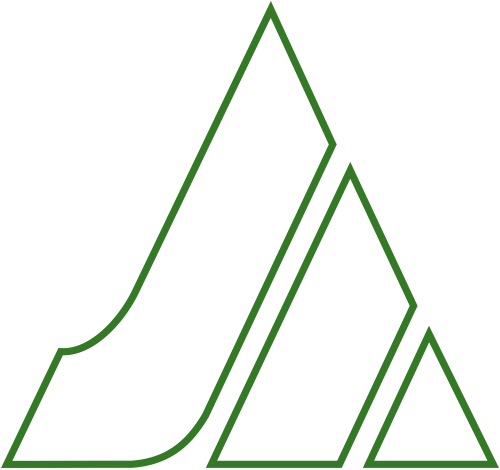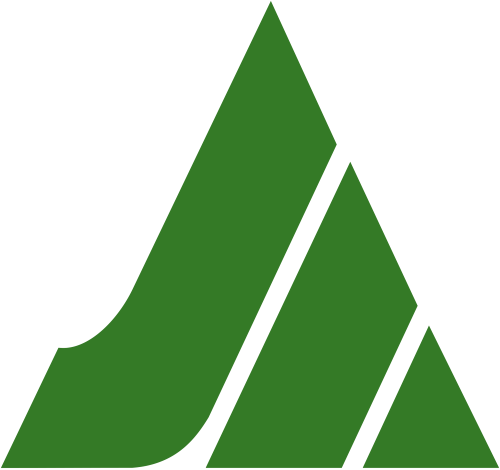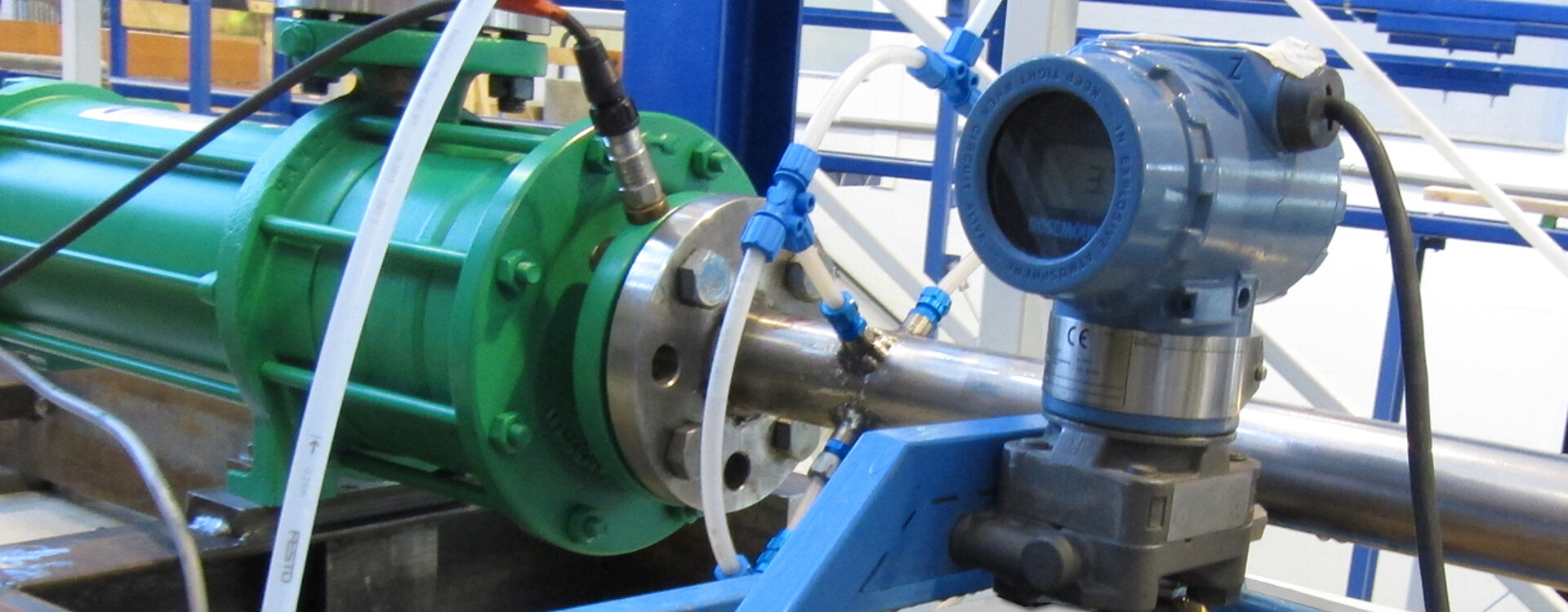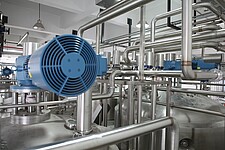Optimisation of Canned Motor Pumps
The Use of Canned Motor Pumps
Canned motor pumps are used in a wide variety of production processes for two main reasons: firstly, they offer high system reliability, and secondly, they are sealless and still 100% hermetically tight. Thus they never leak to the environment, even under extreme operating conditions.
As with many process pumps, canned motor pumps are often designed for large delivery heads with small flow rates at the same time. Usually, the specific speed of these pump designs is relatively low due to physical limitations, this results in a rather poor hydraulic efficiency.
The operational reliability of a hermetic pump concept is already ecologically so worthwhile, that a higher power consumption was accepted in the past. Due to directives in force today, such as the EU's Energy Efficiency Directive, companies are being pushed to improve the efficiency of their products. Since pumps consume about 30 % of the energy in Europe, though not only there, they offer a huge potential for energy savings.
Realisation of the Optimisation
At the beginning of the hydraulic optimisation, the main losses must be determined. In this specific case, the model of a multistage canned motor pump with an additional radial suction impeller was generated and subsequently the pump was analysed in detail using CFD simulation.
It became apparent that in order to obtain usable simulation results, all components such as impellers, guide vanes, deflection vanes, gaps, pressure relief bores as well as the hydraulically coupled rotor of the engine must be included.
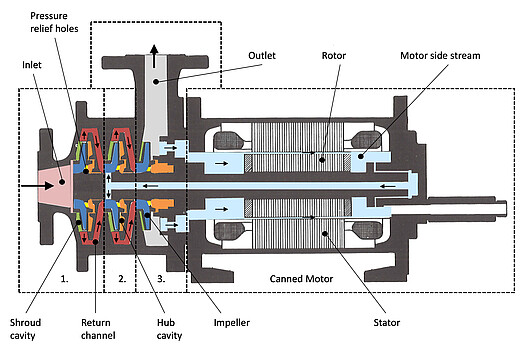
Numerical simulations were performed using ANSYS CFX in stationary and transient mode and with scale-resolved turbulence models. Structured grids were mainly used for the impeller, the gaps and the pressure relief holes, with the final model of the existing pump consisting of more than 35 million nodes. The behaviour of the main components was analysed in detail, additionally the CFD simulations were validated with model tests.
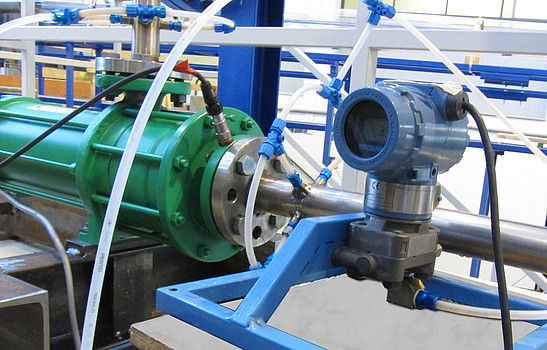
Based on the presented loss analysis of the existing pump, the data of the manual engineering analysis provided the start-up values for the automated optimisation, first in a reduced and fully parameterised model of the hydraulic part which included the wet runner drive and all components as mentioned above.
In total, more than 300 geometry variations and their effects were analysed, the results summarised and validated again with the complete numerical pump and drive model.
Through the numerical simulations, it was possible to predict an enormous increase in efficiency at the maximum operating point and at partial load, considering all the specified hydraulic characteristics, such as the head curve, the suction behaviour and the dimensions.
Finally, the optimised model was manufactured using rapid prototyping and tested in our laboratory. The results show a very satisfying correlation between the numerically predicted results and the ones measured on the test rig – which even exceeded the prediction! - and prove the high quality of the numerical simulations carried out.
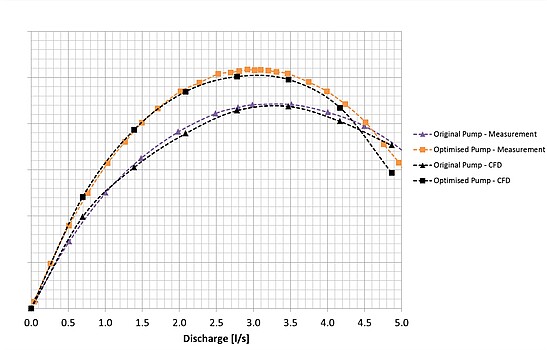
You might also be interested in this:
Research on Process Pumps
Optimisation of side channel pumps
Energy Efficient Pump Systems
Optimisation potentials throug speed control
Stay up to date
Subscribe to our newsletter and stay up to date on our activities, continuing education and conferences.
We are your independent expert for:
- On-site measurements according to IEC 60041 and IEC 62006
- Acceptance tests and model tests according to IEC 60193, ISO 9906, IEC 60534, IEC 62006
- Plant, operation and life cycle tests
- Endurance test
- Comparison of experimental data with numerical simulation (3D-CFD)
- Analysis, design and optimisation of hydraulic machines, components and complete systems
- Water hammer and pressure surge as well as transient conditions of fluid and gas flows
- Fluid-structure interaction
We look forward to your enquiry!
Our experts for your fluid technology issues for pumps and systems:
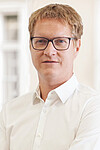
Jürgen Schiffer-Rosenberger
Dipl.-Ing. Dr.techn.
CEO and and Managing Partner

Stefan Höller
Dipl.-Ing.
Chief Engineer

Christian Bodner
Dipl.-Ing.
Chief Engineer
